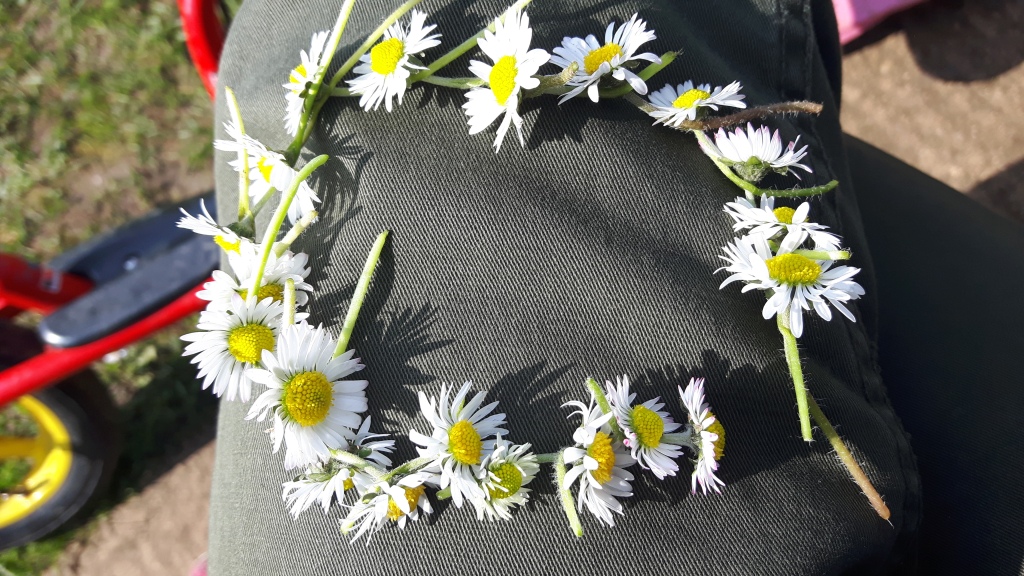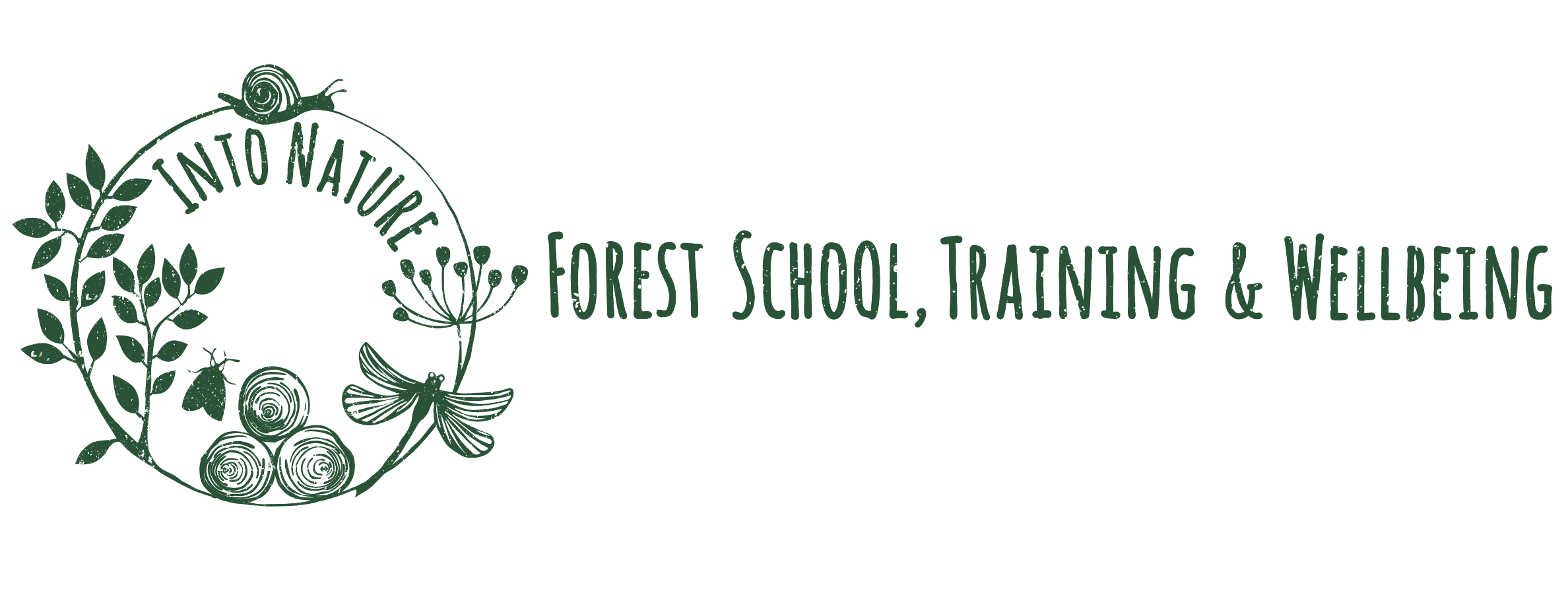If you have been following our posts, you will probably know by now that for most of the time we like to keep things simple. It is good to challenge ourselves with unfamiliar or more complicated makes and challenges, but in times when anxiety levels are high and we are busy (re-)organising our lives, providing school at home and keeping everyone levelled, a simple, meditative activity might be all we need to calm and ground ourselves.

So today, we are making daisy chains. As always when we pick things, please only pick some where there are plenty! Flowers are an important food source for bees and other insects.
Find a nice spot near some daisies – you can pick them as you make your chain. Using your finger nail, make a little cut downwards into two daisy stems. Push one into the other. Then pick another one, make the little cut and insert it into the opening of the previous stem. Repeat until your chain is finished. Voila!
You can also make chains with other plants, e.g. dandelions that are also plentiful at the moment.
More than a ‘weed’
Being such a small and abundant flower, the daisy, or also English, common or lawn daisy Bellis perennis, is often underrated. But look a bit closer, and it really is a remarkable plant. One astounding fact is that it does not only possess one flowerhead, as one might think; no, it consists of many flowers, or florets, all clustered in one flower disk. Each of the small yellow ‘dots’ on the flower head is actually an individual flower!
The name daisy is said to come from an old English version of ‘day’s eye’ as they open in the morning and close in the night. Daisies not only look pretty and are a great nectar source for insects, they also have medicinal uses and are good for healing wounds and relieving coughs and indigestion. Watch out for our future post showing you how to make daisy wound salve.
